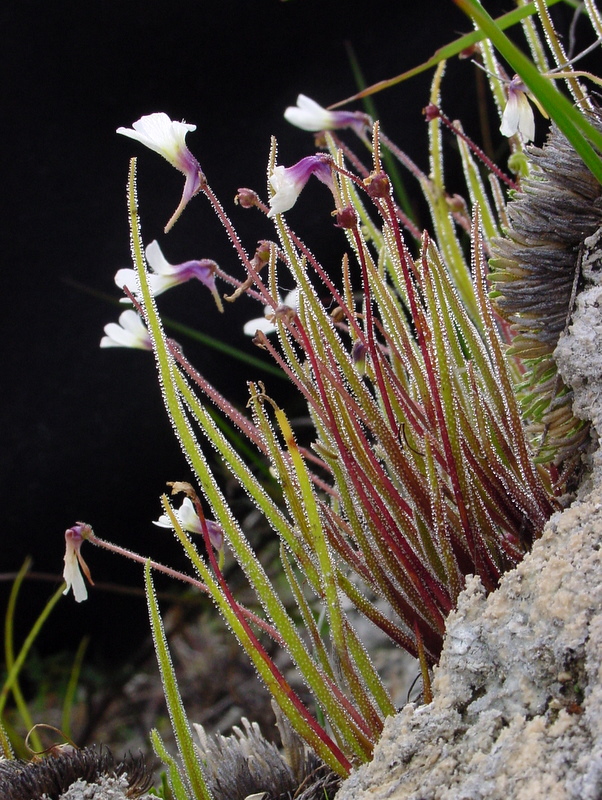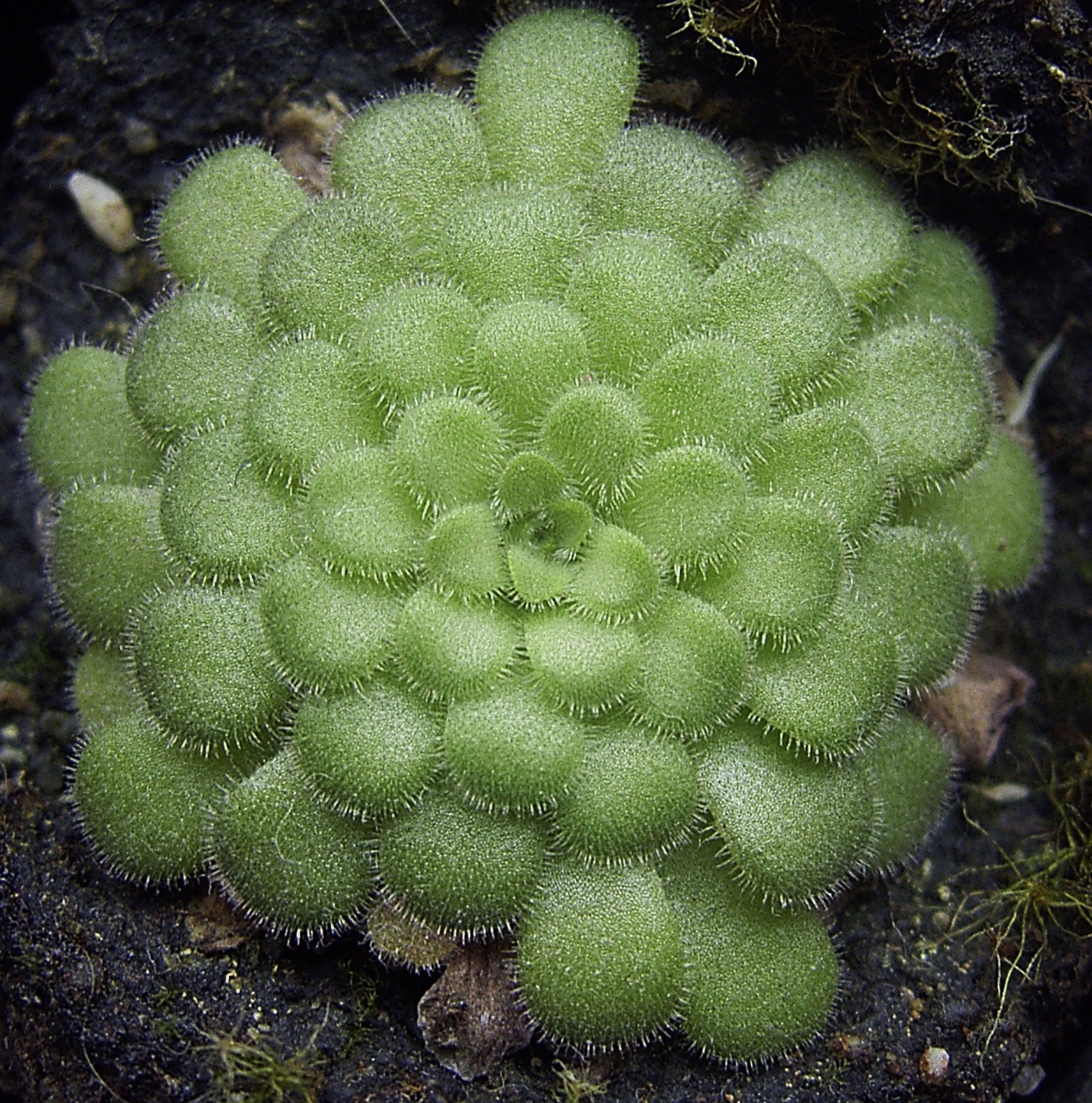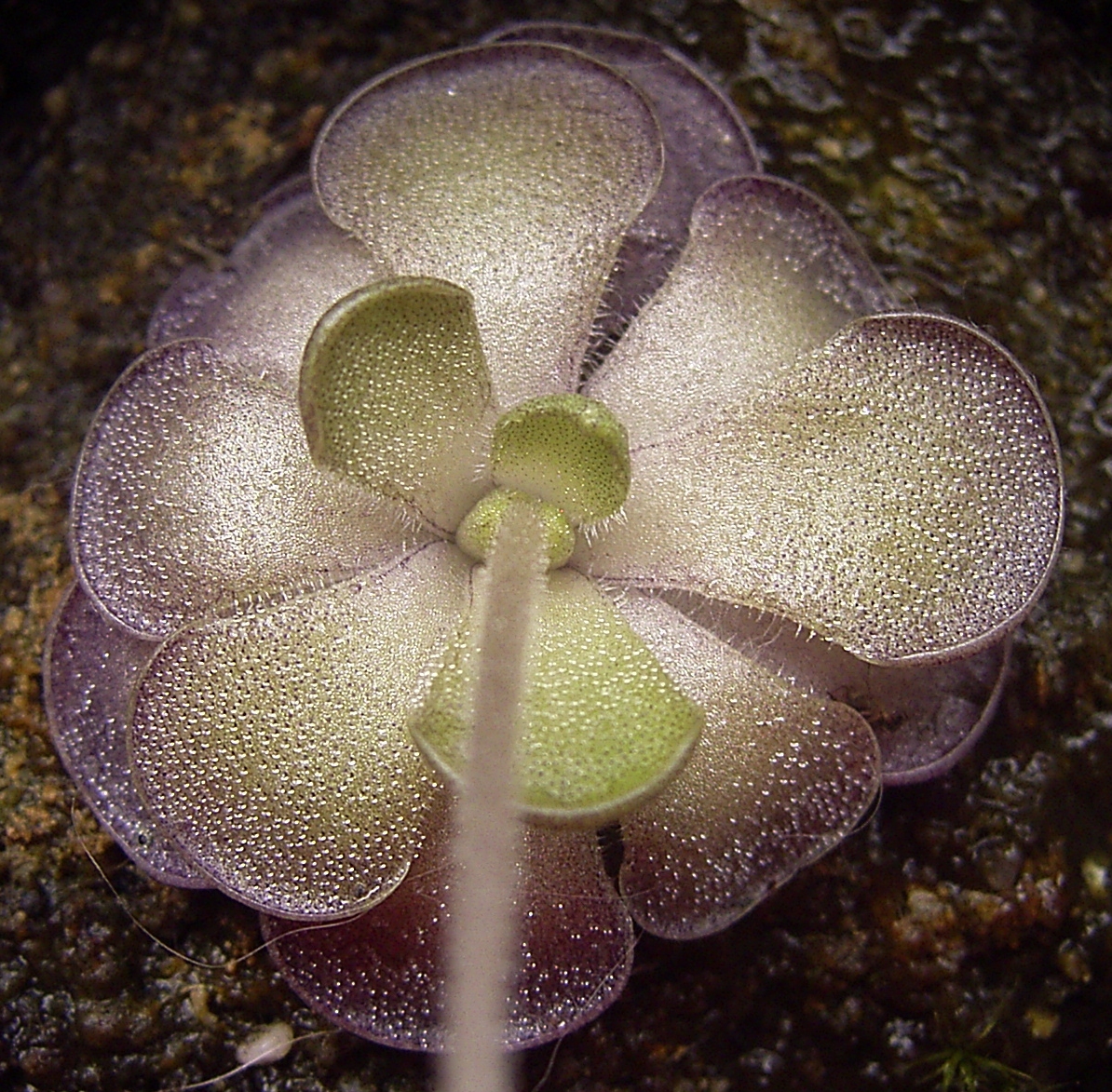|
List Of Pinguicula Species
:''This article is a list of the butterworts, the species of the genus Pinguicula. For general information on butterworts, please see the main article on Pinguicula.'' The genus ''Pinguicula'' contains the 83 species of butterworts, belonging to the bladderwort family (Lentibulariaceae). It has a natural distribution across most of the Northern Hemisphere, though over half of the species are concentrated in Mexico and Central America. Siegfried Jost Casper systematically divided them into three subgenera with 15 sections. Subsequent phylogenetic research showed that many of these groupings are polyphyletic, but they are used below. Subgenus ''Isoloba'' Section ''Agnata'' *'' Pinguicula agnata'' *'' Pinguicula albida'' *'' Pinguicula benedicta'' *'' Pinguicula cubensis'' *'' Pinguicula filifolia'' *''Pinguicula gigantea'' *'' Pinguicula infundibuliformis'' *''Pinguicula lithophytica'' *''Pinguicula pilosa'' Section ''Cardiophyllum'' *''Pinguicula crystallina'' ** ... [...More Info...] [...Related Items...] OR: [Wikipedia] [Google] [Baidu] |
Pinguicula
''Pinguicula'', commonly known as the butterworts, is a genus of carnivorous flowering plants in the family Lentibulariaceae. They use sticky, glandular leaves to lure, trap, and digest insects in order to supplement the poor mineral nutrition they obtain from the environment. Of the roughly 80 currently known species, 13 are native to Europe, 9 to North America, and some to northern Asia. The largest number of species is in South and Central America. Etymology The name ''Pinguicula'' is derived from a term coined by Conrad Gesner, who in his 1561 work entitled ''Horti Germaniae'' commented on the glistening leaves: ''"propter pinguia et tenera folia…"'' (Latin ''pinguis'', "fat"). The common name "butterwort" reflects this characteristic. Characteristics The majority of ''Pinguicula'' are perennial plants. The only known annuals are ''P. sharpii'', ''P. takakii'', ''P. crenatiloba'', and ''P. pumila''. All species form stemless rosettes. Habitat Butterworts can be ... [...More Info...] [...Related Items...] OR: [Wikipedia] [Google] [Baidu] |
Pinguicula Pilosa
''Pinguicula'', commonly known as the butterworts, is a genus of carnivorous flowering plants in the family Lentibulariaceae. They use sticky, glandular leaves to lure, trap, and digest insects in order to supplement the poor mineral nutrition they obtain from the environment. Of the roughly 80 currently known species, 13 are native to Europe, 9 to North America, and some to northern Asia. The largest number of species is in South and Central America. Etymology The name ''Pinguicula'' is derived from a term coined by Conrad Gesner, who in his 1561 work entitled ''Horti Germaniae'' commented on the glistening leaves: ''"propter pinguia et tenera folia…"'' (Latin ''pinguis'', "fat"). The common name "butterwort" reflects this characteristic. Characteristics The majority of ''Pinguicula'' are perennial plants. The only known annuals are ''P. sharpii'', ''P. takakii'', ''P. crenatiloba'', and ''P. pumila''. All species form stemless rosettes. Habitat Butterworts can be ... [...More Info...] [...Related Items...] OR: [Wikipedia] [Google] [Baidu] |
Pinguicula Rotundiflora
''Pinguicula rotundiflora'' is a species of carnivorous plant in the butterwort genus ''Pinguicula'', family Lentibulariaceae, native to northeastern Mexico. It has gained the Royal Horticultural Society The Royal Horticultural Society (RHS), founded in 1804 as the Horticultural Society of London, is the UK's leading gardening charity. The RHS promotes horticulture through its five gardens at Wisley (Surrey), Hyde Hall (Essex), Harlow Carr (Nor ...'s Award of Garden Merit. References rotundiflora Carnivorous plants of North America Endemic flora of Mexico Flora of Northeastern Mexico Plants described in 1985 {{Lentibulariaceae-stub ... [...More Info...] [...Related Items...] OR: [Wikipedia] [Google] [Baidu] |
Pinguicula Parvifolia
''Pinguicula'', commonly known as the butterworts, is a genus of carnivorous flowering plants in the family Lentibulariaceae. They use sticky, glandular leaves to lure, trap, and digest insects in order to supplement the poor mineral nutrition they obtain from the environment. Of the roughly 80 currently known species, 13 are native to Europe, 9 to North America, and some to northern Asia. The largest number of species is in South and Central America. Etymology The name ''Pinguicula'' is derived from a term coined by Conrad Gesner, who in his 1561 work entitled ''Horti Germaniae'' commented on the glistening leaves: ''"propter pinguia et tenera folia…"'' (Latin ''pinguis'', "fat"). The common name "butterwort" reflects this characteristic. Characteristics The majority of ''Pinguicula'' are perennial plants. The only known annuals are ''P. sharpii'', ''P. takakii'', ''P. crenatiloba'', and ''P. pumila''. All species form stemless rosettes. Habitat Butterworts can be ... [...More Info...] [...Related Items...] OR: [Wikipedia] [Google] [Baidu] |
Pinguicula Mirandae
''Pinguicula'', commonly known as the butterworts, is a genus of carnivorous flowering plants in the family Lentibulariaceae. They use sticky, glandular leaves to lure, trap, and digest insects in order to supplement the poor mineral nutrition they obtain from the environment. Of the roughly 80 currently known species, 13 are native to Europe, 9 to North America, and some to northern Asia. The largest number of species is in South and Central America. Etymology The name ''Pinguicula'' is derived from a term coined by Conrad Gesner, who in his 1561 work entitled ''Horti Germaniae'' commented on the glistening leaves: ''"propter pinguia et tenera folia…"'' (Latin ''pinguis'', "fat"). The common name "butterwort" reflects this characteristic. Characteristics The majority of ''Pinguicula'' are perennial plants. The only known annuals are ''P. sharpii'', ''P. takakii'', ''P. crenatiloba'', and ''P. pumila''. All species form stemless rosettes. Habitat Butterworts can be ... [...More Info...] [...Related Items...] OR: [Wikipedia] [Google] [Baidu] |
Pinguicula Kondoi
''Pinguicula'', commonly known as the butterworts, is a genus of carnivorous flowering plants in the family Lentibulariaceae. They use sticky, glandular leaves to lure, trap, and digest insects in order to supplement the poor mineral nutrition they obtain from the environment. Of the roughly 80 currently known species, 13 are native to Europe, 9 to North America, and some to northern Asia. The largest number of species is in South and Central America. Etymology The name ''Pinguicula'' is derived from a term coined by Conrad Gesner, who in his 1561 work entitled ''Horti Germaniae'' commented on the glistening leaves: ''"propter pinguia et tenera folia…"'' (Latin ''pinguis'', "fat"). The common name "butterwort" reflects this characteristic. Characteristics The majority of ''Pinguicula'' are perennial plants. The only known annuals are ''P. sharpii'', ''P. takakii'', ''P. crenatiloba'', and ''P. pumila''. All species form stemless rosettes. Habitat Butterworts can be ... [...More Info...] [...Related Items...] OR: [Wikipedia] [Google] [Baidu] |
Pinguicula Imitatrix
''Pinguicula'', commonly known as the butterworts, is a genus of carnivorous flowering plants in the family Lentibulariaceae. They use sticky, glandular leaves to lure, trap, and digest insects in order to supplement the poor mineral nutrition they obtain from the environment. Of the roughly 80 currently known species, 13 are native to Europe, 9 to North America, and some to northern Asia. The largest number of species is in South and Central America. Etymology The name ''Pinguicula'' is derived from a term coined by Conrad Gesner, who in his 1561 work entitled ''Horti Germaniae'' commented on the glistening leaves: ''"propter pinguia et tenera folia…"'' (Latin ''pinguis'', "fat"). The common name "butterwort" reflects this characteristic. Characteristics The majority of ''Pinguicula'' are perennial plants. The only known annuals are ''P. sharpii'', ''P. takakii'', ''P. crenatiloba'', and ''P. pumila''. All species form stemless rosettes. Habitat Butterworts can be ... [...More Info...] [...Related Items...] OR: [Wikipedia] [Google] [Baidu] |
Pinguicula Conzattii
''Pinguicula conzattii'' is an insectivorous plant of the genus ''Pinguicula'' native to the Mexican state of Oaxaca, a member of the section '' Heterophyllum''. Closely related to ''Pinguicula mirandae'', it is notable for being pubescent on both sides of its winter leaves.Zamudio, S. and van Marm, J; Pinguicula conzattii'' (Lentibulariaceae), una especie nueva del estado de Oaxaca, Mexico''; Acta Botanica Mexicana. It is named in honour of Cassiano Conzatti, an Italian-born botanist who spent most of his life in Mexico. Morphology ''Pinguicula conzattii'' is a perennial rosetted herb bearing stiff, ground-hugging rotund 28–50 mm. (1-2 in.) long leaves borne on 10–20 mm. (⅜–⅞ in) petioles. These are densely covered with stalked mucilaginous and sessile digestive glands, which serve to trap and digest insect prey and absorb the resulting nutrient mixture to supplement their nitrate-low environment. During dryer winter conditions when food is ... [...More Info...] [...Related Items...] OR: [Wikipedia] [Google] [Baidu] |
Pinguicula Acuminata
''Pinguicula acuminata'' is an insectivorous plant of the genus ''Pinguicula'' endemic to the Mexican state of Hidalgo, a member of the section '' Heterophyllum''. It is notable for producing flowers while the winter rosette is buried beneath the soil surface. Described in 1839, it was not rediscovered until 150 years later. Morphology ''Pinguicula acuminata'' is a perennial rosetted herb bearing stiff, ground-hugging ovate to cordiform acuminate 22–92 mm. (-3 in.) long leaves. These are borne on unusually long petioles (20–58 mm or –1 in), which allow the stem base to remain buried slightly underground.Luhrs, Hans. 1994 ''Pinguicula acuminata''; ''International Pinguicula Study Group Newsletter'', 4, Feb. 1994 The leaves are densely covered with stalked mucilaginous and sessile digestive glands, which serve to trap and digest insect prey and absorb the resulting nutrient mixture to supplement their nitrate-low environment. During dryer winter conditi ... [...More Info...] [...Related Items...] OR: [Wikipedia] [Google] [Baidu] |
Pinguicula Heterophylla
''Pinguicula'', commonly known as the butterworts, is a genus of carnivorous flowering plants in the family Lentibulariaceae. They use sticky, glandular leaves to lure, trap, and digest insects in order to supplement the poor mineral nutrition they obtain from the environment. Of the roughly 80 currently known species, 13 are native to Europe, 9 to North America, and some to northern Asia. The largest number of species is in South and Central America. Etymology The name ''Pinguicula'' is derived from a term coined by Conrad Gesner, who in his 1561 work entitled ''Horti Germaniae'' commented on the glistening leaves: ''"propter pinguia et tenera folia…"'' (Latin ''pinguis'', "fat"). The common name "butterwort" reflects this characteristic. Characteristics The majority of ''Pinguicula'' are perennial plants. The only known annuals are ''P. sharpii'', ''P. takakii'', ''P. crenatiloba'', and ''P. pumila''. All species form stemless rosettes. Habitat Butterworts can be ... [...More Info...] [...Related Items...] OR: [Wikipedia] [Google] [Baidu] |
Pinguicula Lignicola
''Pinguicula'', commonly known as the butterworts, is a genus of carnivorous flowering plants in the family Lentibulariaceae. They use sticky, glandular leaves to lure, trap, and digest insects in order to supplement the poor mineral nutrition they obtain from the environment. Of the roughly 80 currently known species, 13 are native to Europe, 9 to North America, and some to northern Asia. The largest number of species is in South and Central America. Etymology The name ''Pinguicula'' is derived from a term coined by Conrad Gesner, who in his 1561 work entitled ''Horti Germaniae'' commented on the glistening leaves: ''"propter pinguia et tenera folia…"'' (Latin ''pinguis'', "fat"). The common name "butterwort" reflects this characteristic. Characteristics The majority of ''Pinguicula'' are perennial plants. The only known annuals are ''P. sharpii'', ''P. takakii'', ''P. crenatiloba'', and ''P. pumila''. All species form stemless rosettes. Habitat Butterworts can be ... [...More Info...] [...Related Items...] OR: [Wikipedia] [Google] [Baidu] |
Pinguicula Casabitoana
''Pinguicula casabitoana'', commonly known as the Casabito butterwort, is a Critically Endangered species of butterwort endemic to the Dominican Republic. This species is mostly epiphytic and occurs in montane Montane ecosystems are found on the slopes of mountains. The alpine climate in these regions strongly affects the ecosystem because temperatures fall as elevation increases, causing the ecosystem to stratify. This stratification is a crucial ... cloud forests. It is known from a few localities, all of them in the Cordillera Central. References {{Taxonbar, from=Q1788101 Flora of the Dominican Republic Plants described in 1960 casabitoana Flora without expected TNC conservation status ... [...More Info...] [...Related Items...] OR: [Wikipedia] [Google] [Baidu] |



_-_Keila.jpg)